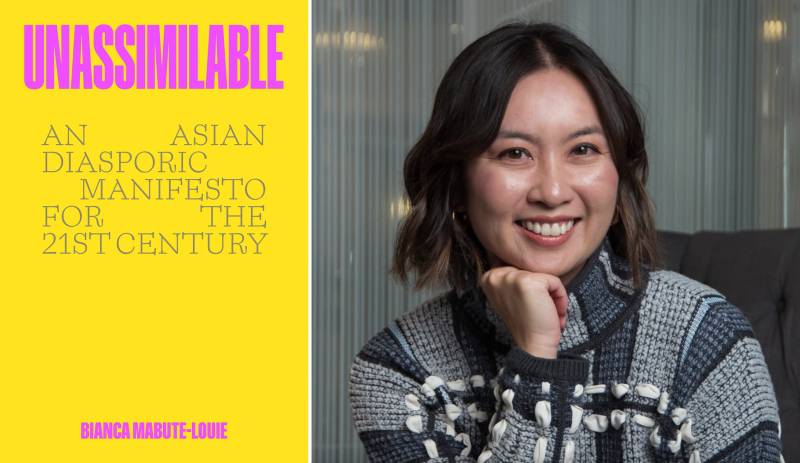Unassimilable, Bianca Mabute-Louie’s debut book, opens with a scene in the San Marino Library — a quiet, wealthy suburb in the San Gabriel Valley (known to locals as the SGV). The scholar and activist recounts a visit to the library the summer after college, when she overheard an older white woman mutter, staring at her, “My ancestors were immigrants too, but they assimilated. Unlike them — they come over, take over, don’t even bother learning the language…They’re everywhere now.”
This scene felt familiar to me. I’d attended San Marino High School my freshman year, and experienced firsthand how the longstanding white population grappled with the town’s relatively recent shift into an Asian majority. But reading the scene in Unassimilable brought up questions I hadn’t considered before. Many Asian Americans in the SGV, especially those whose families arrived within the last 60 years, might not be interested in assimilating into white America. But what if we didn’t see that as a bad thing? What if, instead of something to be ashamed of, our refusal to assimilate could be a source of pride?
A mix of poignant memoir, intensive research and sharp socio-political commentary, Unassimilable follows Mabute-Louie’s journey of racial reckoning. Born to immigrant parents from Hong Kong in Monterey Park, the author describes the pressure she felt to prove herself at “Predominantly White Institutions” (or PWIs, as she calls them) throughout her adolescence. She found pockets of belonging in her Chinese immigrant church community, but truly came of age in the Bay Area — where she found empowerment in her identity while earning her master’s degree in Asian American Studies at San Francisco State University. Through these experiences, Unassimilable offers a window into the many different ways people navigate assimilation in this country. Yet it encourages us to reject traditional narratives of belonging through acceptance and achievement at PWIs.
Mabute-Louie interweaves moving personal anecdotes with compelling statistics and quotes from writers like Audre Lorde and Frantz Fanon, which makes Unassimilable an approachable read for anyone interested in race and immigration. In the first chapter, she establishes SGV’s position in America, painting a vivid picture of how the area (and Monterey Park specifically) transformed into the nation’s first and largest “ethnoburb.” By tracking the ebbs and flows of U.S. immigration policy, Mabute-Louie reports how the landmark Hart-Celler Act of 1965 led to a rapid influx of socioeconomically diverse Chinese and Vietnamese immigrants and refugees. They created a self-sustaining ecosystem of Asian grocery stores and businesses in the greater Los Angeles area, where one could easily survive — if not thrive — without ever learning English.


